Kiet Van Nguyen
VLSP 2025 MLQA-TSR Challenge: Vietnamese Multimodal Legal Question Answering on Traffic Sign Regulation
Oct 23, 2025Abstract:This paper presents the VLSP 2025 MLQA-TSR - the multimodal legal question answering on traffic sign regulation shared task at VLSP 2025. VLSP 2025 MLQA-TSR comprises two subtasks: multimodal legal retrieval and multimodal question answering. The goal is to advance research on Vietnamese multimodal legal text processing and to provide a benchmark dataset for building and evaluating intelligent systems in multimodal legal domains, with a focus on traffic sign regulation in Vietnam. The best-reported results on VLSP 2025 MLQA-TSR are an F2 score of 64.55% for multimodal legal retrieval and an accuracy of 86.30% for multimodal question answering.
ViMRHP: A Vietnamese Benchmark Dataset for Multimodal Review Helpfulness Prediction via Human-AI Collaborative Annotation
May 12, 2025Abstract:Multimodal Review Helpfulness Prediction (MRHP) is an essential task in recommender systems, particularly in E-commerce platforms. Determining the helpfulness of user-generated reviews enhances user experience and improves consumer decision-making. However, existing datasets focus predominantly on English and Indonesian, resulting in a lack of linguistic diversity, especially for low-resource languages such as Vietnamese. In this paper, we introduce ViMRHP (Vietnamese Multimodal Review Helpfulness Prediction), a large-scale benchmark dataset for MRHP task in Vietnamese. This dataset covers four domains, including 2K products with 46K reviews. Meanwhile, a large-scale dataset requires considerable time and cost. To optimize the annotation process, we leverage AI to assist annotators in constructing the ViMRHP dataset. With AI assistance, annotation time is reduced (90 to 120 seconds per task down to 20 to 40 seconds per task) while maintaining data quality and lowering overall costs by approximately 65%. However, AI-generated annotations still have limitations in complex annotation tasks, which we further examine through a detailed performance analysis. In our experiment on ViMRHP, we evaluate baseline models on human-verified and AI-generated annotations to assess their quality differences. The ViMRHP dataset is publicly available at https://github.com/trng28/ViMRHP
NTIRE 2025 Challenge on Day and Night Raindrop Removal for Dual-Focused Images: Methods and Results
Apr 19, 2025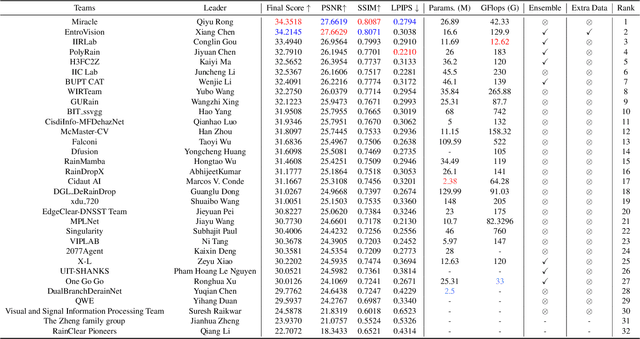
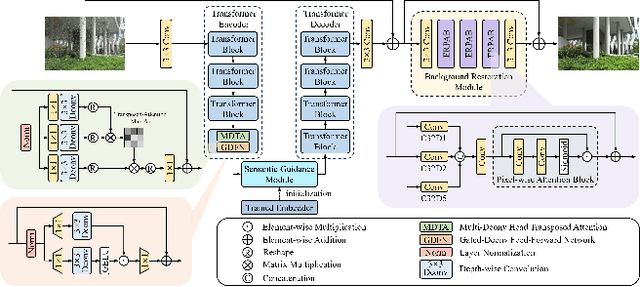
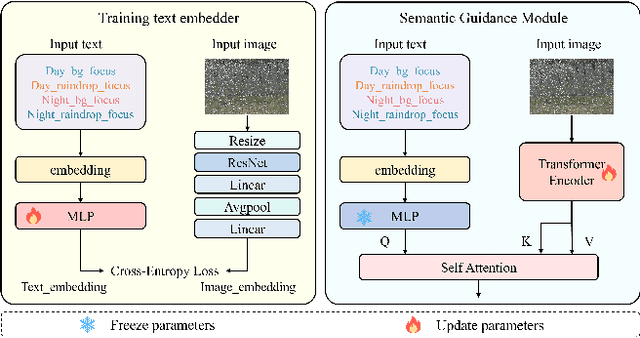
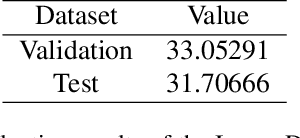
Abstract:This paper reviews the NTIRE 2025 Challenge on Day and Night Raindrop Removal for Dual-Focused Images. This challenge received a wide range of impressive solutions, which are developed and evaluated using our collected real-world Raindrop Clarity dataset. Unlike existing deraining datasets, our Raindrop Clarity dataset is more diverse and challenging in degradation types and contents, which includes day raindrop-focused, day background-focused, night raindrop-focused, and night background-focused degradations. This dataset is divided into three subsets for competition: 14,139 images for training, 240 images for validation, and 731 images for testing. The primary objective of this challenge is to establish a new and powerful benchmark for the task of removing raindrops under varying lighting and focus conditions. There are a total of 361 participants in the competition, and 32 teams submitting valid solutions and fact sheets for the final testing phase. These submissions achieved state-of-the-art (SOTA) performance on the Raindrop Clarity dataset. The project can be found at https://lixinustc.github.io/CVPR-NTIRE2025-RainDrop-Competition.github.io/.
LiGT: Layout-infused Generative Transformer for Visual Question Answering on Vietnamese Receipts
Feb 26, 2025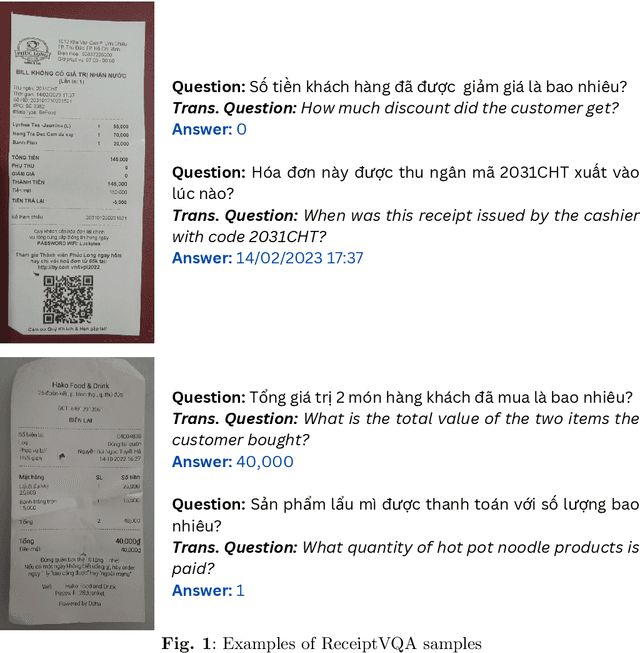
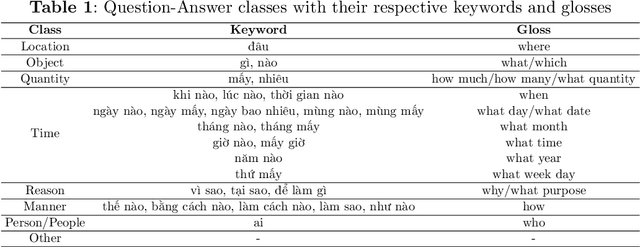
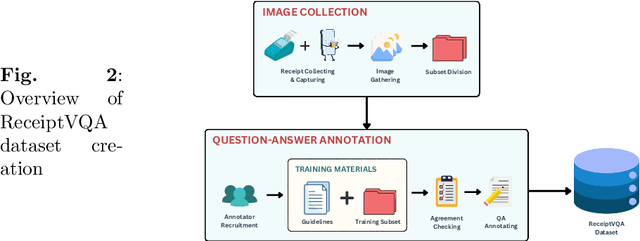

Abstract:\textbf{Purpose:} Document Visual Question Answering (document VQA) challenges multimodal systems to holistically handle textual, layout, and visual modalities to provide appropriate answers. Document VQA has gained popularity in recent years due to the increasing amount of documents and the high demand for digitization. Nonetheless, most of document VQA datasets are developed in high-resource languages such as English. \textbf{Methods:} In this paper, we present ReceiptVQA (\textbf{Receipt} \textbf{V}isual \textbf{Q}uestion \textbf{A}nswering), the initial large-scale document VQA dataset in Vietnamese dedicated to receipts, a document kind with high commercial potentials. The dataset encompasses \textbf{9,000+} receipt images and \textbf{60,000+} manually annotated question-answer pairs. In addition to our study, we introduce LiGT (\textbf{L}ayout-\textbf{i}nfused \textbf{G}enerative \textbf{T}ransformer), a layout-aware encoder-decoder architecture designed to leverage embedding layers of language models to operate layout embeddings, minimizing the use of additional neural modules. \textbf{Results:} Experiments on ReceiptVQA show that our architecture yielded promising performance, achieving competitive results compared with outstanding baselines. Furthermore, throughout analyzing experimental results, we found evident patterns that employing encoder-only model architectures has considerable disadvantages in comparison to architectures that can generate answers. We also observed that it is necessary to combine multiple modalities to tackle our dataset, despite the critical role of semantic understanding from language models. \textbf{Conclusion:} We hope that our work will encourage and facilitate future development in Vietnamese document VQA, contributing to a diverse multimodal research community in the Vietnamese language.
A Large-Scale Benchmark for Vietnamese Sentence Paraphrases
Feb 11, 2025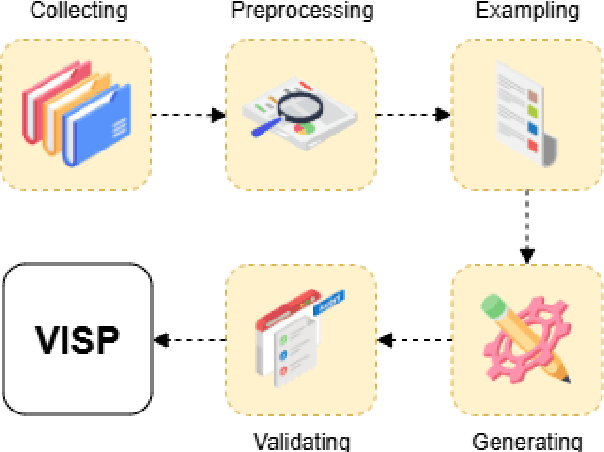
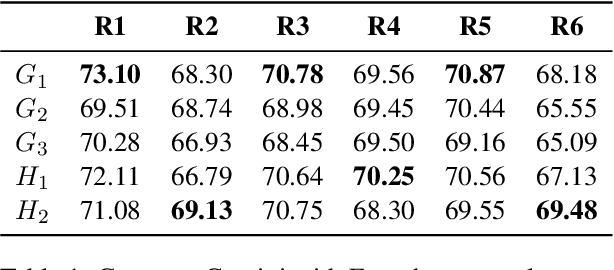
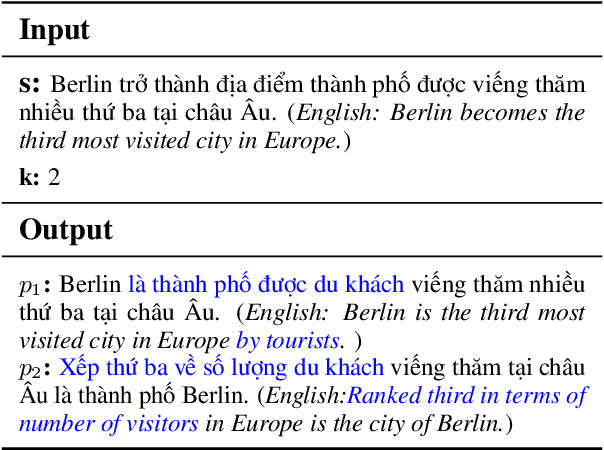
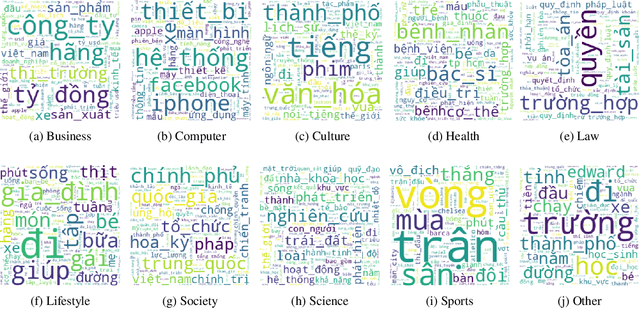
Abstract:This paper presents ViSP, a high-quality Vietnamese dataset for sentence paraphrasing, consisting of 1.2M original-paraphrase pairs collected from various domains. The dataset was constructed using a hybrid approach that combines automatic paraphrase generation with manual evaluation to ensure high quality. We conducted experiments using methods such as back-translation, EDA, and baseline models like BART and T5, as well as large language models (LLMs), including GPT-4o, Gemini-1.5, Aya, Qwen-2.5, and Meta-Llama-3.1 variants. To the best of our knowledge, this is the first large-scale study on Vietnamese paraphrasing. We hope that our dataset and findings will serve as a valuable foundation for future research and applications in Vietnamese paraphrase tasks.
ViSoLex: An Open-Source Repository for Vietnamese Social Media Lexical Normalization
Jan 13, 2025Abstract:ViSoLex is an open-source system designed to address the unique challenges of lexical normalization for Vietnamese social media text. The platform provides two core services: Non-Standard Word (NSW) Lookup and Lexical Normalization, enabling users to retrieve standard forms of informal language and standardize text containing NSWs. ViSoLex's architecture integrates pre-trained language models and weakly supervised learning techniques to ensure accurate and efficient normalization, overcoming the scarcity of labeled data in Vietnamese. This paper details the system's design, functionality, and its applications for researchers and non-technical users. Additionally, ViSoLex offers a flexible, customizable framework that can be adapted to various datasets and research requirements. By publishing the source code, ViSoLex aims to contribute to the development of more robust Vietnamese natural language processing tools and encourage further research in lexical normalization. Future directions include expanding the system's capabilities for additional languages and improving the handling of more complex non-standard linguistic patterns.
ViFactCheck: A New Benchmark Dataset and Methods for Multi-domain News Fact-Checking in Vietnamese
Dec 19, 2024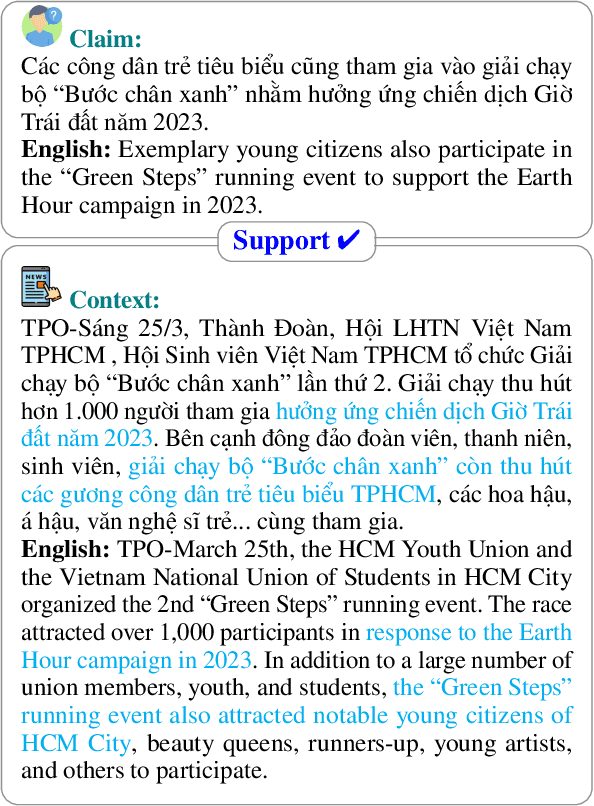
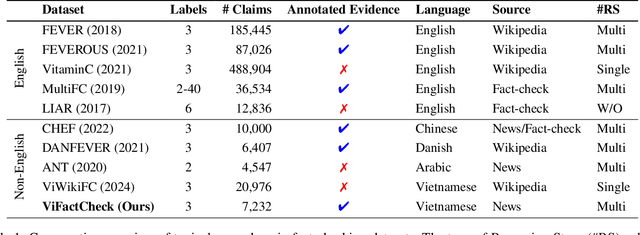
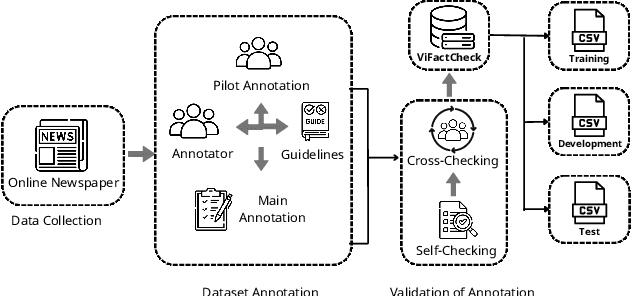
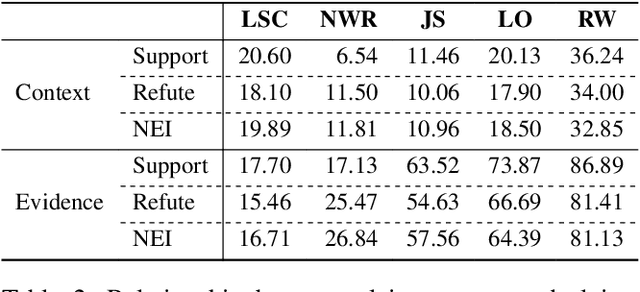
Abstract:The rapid spread of information in the digital age highlights the critical need for effective fact-checking tools, particularly for languages with limited resources, such as Vietnamese. In response to this challenge, we introduce ViFactCheck, the first publicly available benchmark dataset designed specifically for Vietnamese fact-checking across multiple online news domains. This dataset contains 7,232 human-annotated pairs of claim-evidence combinations sourced from reputable Vietnamese online news, covering 12 diverse topics. It has been subjected to a meticulous annotation process to ensure high quality and reliability, achieving a Fleiss Kappa inter-annotator agreement score of 0.83. Our evaluation leverages state-of-the-art pre-trained and large language models, employing fine-tuning and prompting techniques to assess performance. Notably, the Gemma model demonstrated superior effectiveness, with an impressive macro F1 score of 89.90%, thereby establishing a new standard for fact-checking benchmarks. This result highlights the robust capabilities of Gemma in accurately identifying and verifying facts in Vietnamese. To further promote advances in fact-checking technology and improve the reliability of digital media, we have made the ViFactCheck dataset, model checkpoints, fact-checking pipelines, and source code freely available on GitHub. This initiative aims to inspire further research and enhance the accuracy of information in low-resource languages.
An Attempt to Develop a Neural Parser based on Simplified Head-Driven Phrase Structure Grammar on Vietnamese
Nov 26, 2024Abstract:In this paper, we aimed to develop a neural parser for Vietnamese based on simplified Head-Driven Phrase Structure Grammar (HPSG). The existing corpora, VietTreebank and VnDT, had around 15% of constituency and dependency tree pairs that did not adhere to simplified HPSG rules. To attempt to address the issue of the corpora not adhering to simplified HPSG rules, we randomly permuted samples from the training and development sets to make them compliant with simplified HPSG. We then modified the first simplified HPSG Neural Parser for the Penn Treebank by replacing it with the PhoBERT or XLM-RoBERTa models, which can encode Vietnamese texts. We conducted experiments on our modified VietTreebank and VnDT corpora. Our extensive experiments showed that the simplified HPSG Neural Parser achieved a new state-of-the-art F-score of 82% for constituency parsing when using the same predicted part-of-speech (POS) tags as the self-attentive constituency parser. Additionally, it outperformed previous studies in dependency parsing with a higher Unlabeled Attachment Score (UAS). However, our parser obtained lower Labeled Attachment Score (LAS) scores likely due to our focus on arc permutation without changing the original labels, as we did not consult with a linguistic expert. Lastly, the research findings of this paper suggest that simplified HPSG should be given more attention to linguistic expert when developing treebanks for Vietnamese natural language processing.
Transformer-Based Contextualized Language Models Joint with Neural Networks for Natural Language Inference in Vietnamese
Nov 21, 2024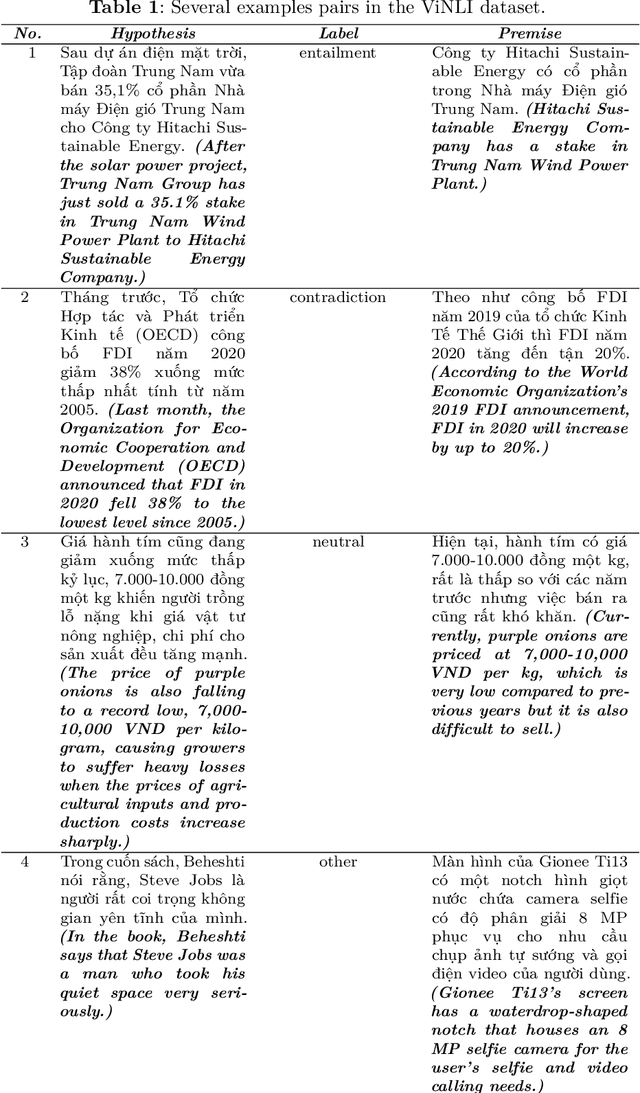
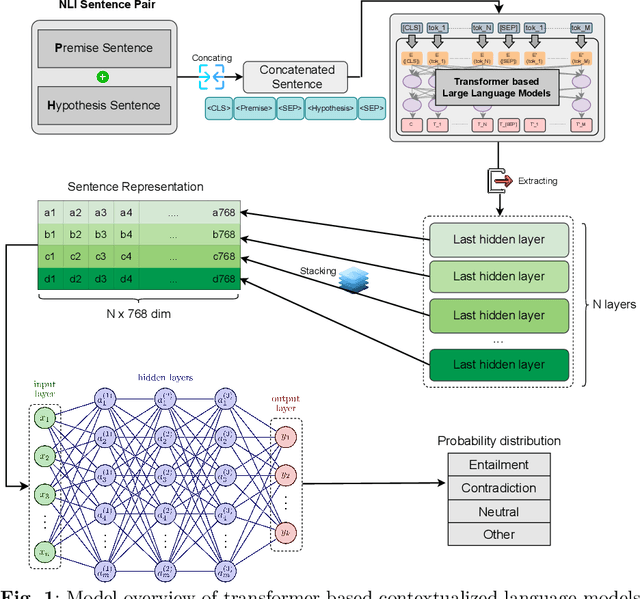
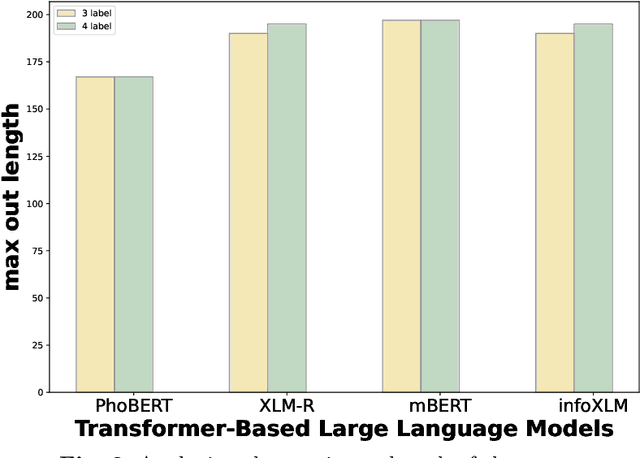
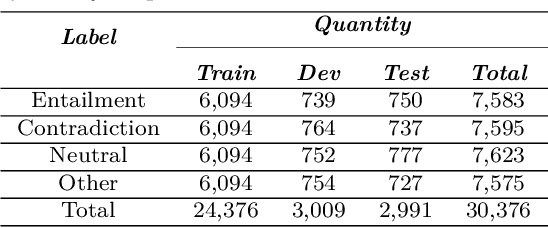
Abstract:Natural Language Inference (NLI) is a task within Natural Language Processing (NLP) that holds value for various AI applications. However, there have been limited studies on Natural Language Inference in Vietnamese that explore the concept of joint models. Therefore, we conducted experiments using various combinations of contextualized language models (CLM) and neural networks. We use CLM to create contextualized work presentations and use Neural Networks for classification. Furthermore, we have evaluated the strengths and weaknesses of each joint model and identified the model failure points in the Vietnamese context. The highest F1 score in this experiment, up to 82.78% in the benchmark dataset (ViNLI). By conducting experiments with various models, the most considerable size of the CLM is XLM-R (355M). That combination has consistently demonstrated superior performance compared to fine-tuning strong pre-trained language models like PhoBERT (+6.58%), mBERT (+19.08%), and XLM-R (+0.94%) in terms of F1-score. This article aims to introduce a novel approach or model that attains improved performance for Vietnamese NLI. Overall, we find that the joint approach of CLM and neural networks is simple yet capable of achieving high-quality performance, which makes it suitable for applications that require efficient resource utilization.
Evaluating Large Language Model Capability in Vietnamese Fact-Checking Data Generation
Nov 08, 2024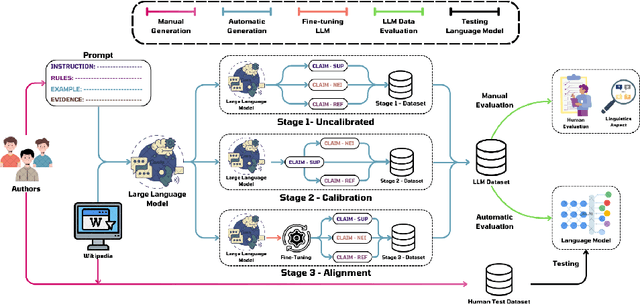

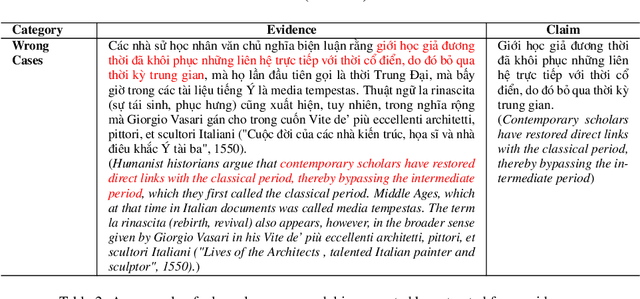
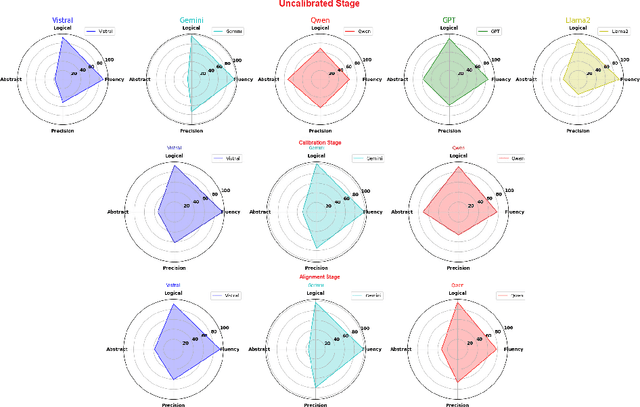
Abstract:Large Language Models (LLMs), with gradually improving reading comprehension and reasoning capabilities, are being applied to a range of complex language tasks, including the automatic generation of language data for various purposes. However, research on applying LLMs for automatic data generation in low-resource languages like Vietnamese is still underdeveloped and lacks comprehensive evaluation. In this paper, we explore the use of LLMs for automatic data generation for the Vietnamese fact-checking task, which faces significant data limitations. Specifically, we focus on fact-checking data where claims are synthesized from multiple evidence sentences to assess the information synthesis capabilities of LLMs. We develop an automatic data construction process using simple prompt techniques on LLMs and explore several methods to improve the quality of the generated data. To evaluate the quality of the data generated by LLMs, we conduct both manual quality assessments and performance evaluations using language models. Experimental results and manual evaluations illustrate that while the quality of the generated data has significantly improved through fine-tuning techniques, LLMs still cannot match the data quality produced by humans.
 Add to Chrome
Add to Chrome Add to Firefox
Add to Firefox Add to Edge
Add to Edge